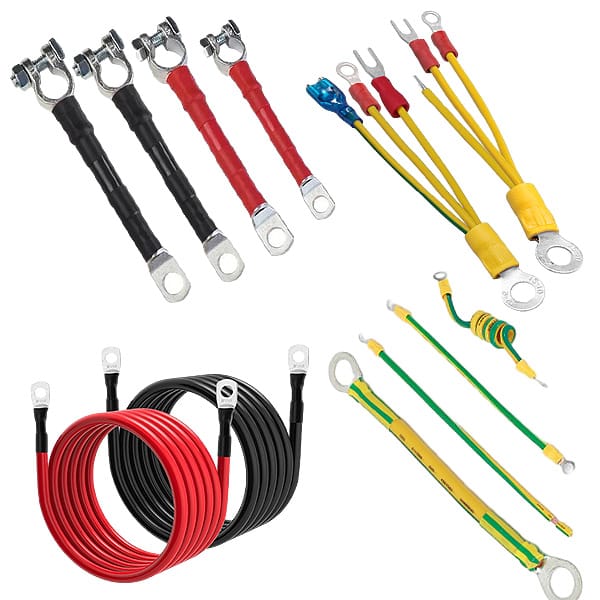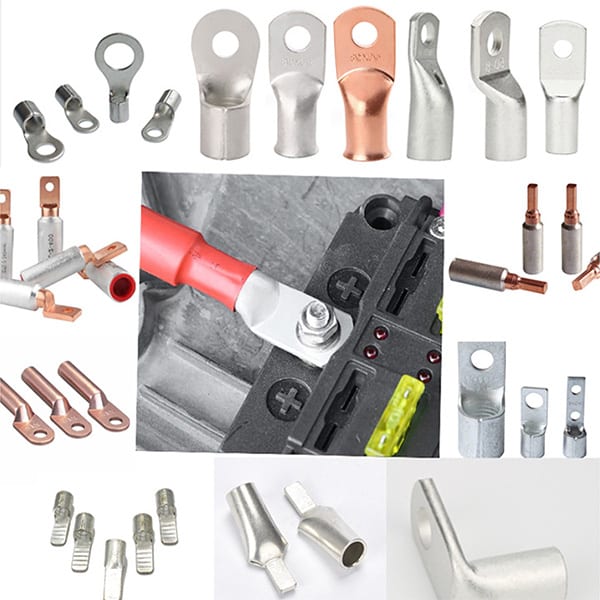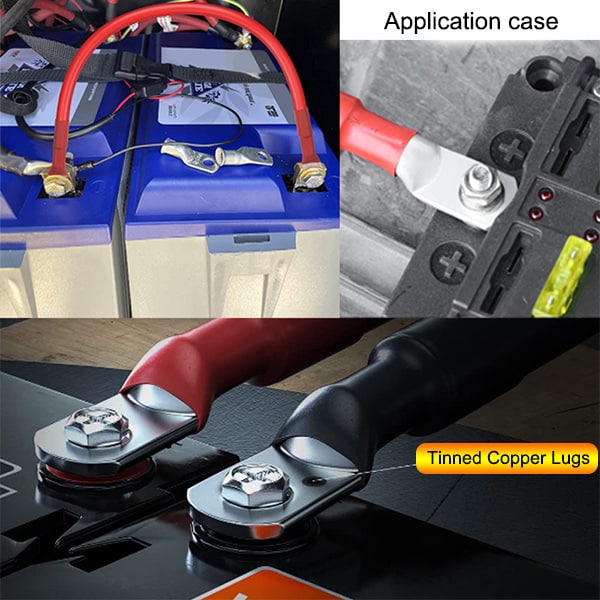
Battery cable assemblies are crucial to many electrical systems, linking batteries and the devices they run. In marine, automotive, industrial, and recreational applications, the quality of these assemblies can significantly affect the performance and life span of your entire system. This guide covers all the essential information about custom battery cable assemblies, including how they are built and where these special cables are used.
What is a Battery Cable Assembly?
Battery cable assembly refers to a group of cables made in different lengths with connections at each end that enable you to link one or more batteries into an electrical system. We also use these cables to provide DC power to machines, vehicles, and other battery-operated equipment. This is the most suitable for automotive, military, aerospace, and manufacturing applications. They usually measure from four to forty-eight inches in length and are made of various gauges, ranges (4/0 AWG), (2/0 AWG), (1/0 AWG), (1 AWG), ( 2 AWG ) up to ( 4 AWG ).
Custom Battery Cable Assembly Process
It is simple to create custom battery cable assemblies. This is how you can construct your cable;
- Select Wire Gauge: Choose the wire size to match your power needs.
- Specify End Types: Determine the desired length for your application.
- Choose Color: Choose the color of the cable per your requirement.
- Choose Connectors: Determine and earmark select connectors needed on each cable end.
- Heat Shrink Tube: Adds durability by placing the heat shrink tube.
These include some visualization tools provided by Romtronic, which help you design your battery cable assemblies in real time with millions of possible configurations. Almost all custom orders are filled on the same or the next business day for quick delivery.
Types of Battery Cables
Kinds of Battery Cables and Their Applications
- Tapered Post Battery Cable Assembly: Available in stamped brass/lead/forged bronze material, different configurations & plating (standard 10 micro-inch if surge plated on threaded ID ).
- Ring-to-Ring Battery Cable Assembly: It has multiple plating options to repel corrosion and is built for rugged durability.
- Flat/ground strap battery cable assembly: These are used in grounding applications and are available in flat or round form.
- We offer booster battery cable assemblies. Ideal for transferring Power in limited spaces, these cables are available with molded and printed stripe marking.
- Fused Battery Cable Assembly: User-selectable fuses can be supplied with higher temperature ratings and custom curves to fit specific power requirements.

Battery Terminals
The performance of a battery cable assembly depends on the kind of battery terminal used. The main factors to consider when taking note of the performance include:
- Material: Common materials include lead, brass, and bronze. Each has its pros and cons regarding conductivity and durability.
- Polarity: Ensuring the correct polarity is crucial, with the positive terminal typically more expansive than the negative.
- Installation Diagrams: Properly identifying the positive and negative terminals is essential to avoid damage and ensure a proper connection.

Preventing and Fixing Battery Terminal Corrosion
Battery terminal corrosion is a common issue that can affect performance. Here are some tips to prevent and address corrosion:
- Use Corrosion Preventive Materials: A Vaseline or anti-corrosion spray coat will extend battery life.
- Regular Maintenance: Frequently check and clean terminals.
- Baking Soda Solution: Mild corrosion is cleaned with baking soda.
- Soda Water: A desperate measure of pouring soda on corroded terminal chips to remove corrosion.
Applications of Battery Cables
The different operations a battery cable assists in include:
- Automobiles: current pathways for direct current; ensures operations for lights, charging systems, and dashboards.
- Golf Carts: conductors between terminal batteries in modified golf carts.
- Solar Battery Banks & RVs: This linkage between solar panels and battery banks ensures a cap on RV operation.
- Braided Ground Cables: Special in restoration jobs to comply with coffee and traffic fines.
- Booster (Jumper) Cables: Short insulator for transferring Power in dead cells.

Benefits of Battery Cable Assembly Outsourcing
Outsourcing the work to experienced companies has advantages when manufacturing battery cable assemblies.
- Skill Set: I offer decades of experience manufacturing reliable, well-made cable assemblies.
- Low cost: The ability to manufacture cables exactly per the design requirements that will be well-adjusted for every environment and application.
- Meets Compliance: This includes regulatory and safety compliance for all assemblies.
- Fast Turnaround: A rapid development cycle allows the product to be delivered on time with stringent quality checks.
Conclusion
The efficient operations of several machines or vehicles make custom battery cable assemblies suitable. Quickly identify these important characteristics among pressure transducers from any manufacturer to benefit your automotive, marine, or industrial cable assembly needs! Using a well-established manufacturer to construct custom-made assemblies will ensure you get a high-quality product that meets your requirements.
.avif)
Sam Wu is the Marketing Manager at Romtronic, holding a degree in Mechatronics. With 12 years of experience in sales within the electronic wiring harness industry, he manages marketing efforts across Europe. An expert in cable assembly, wiring harnesses, and advanced connectivity solutions, Sam simplifies complex technologies, offering clear, actionable advice to help you confidently navigate your electrical projects.


